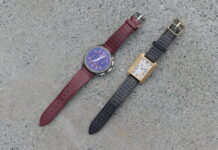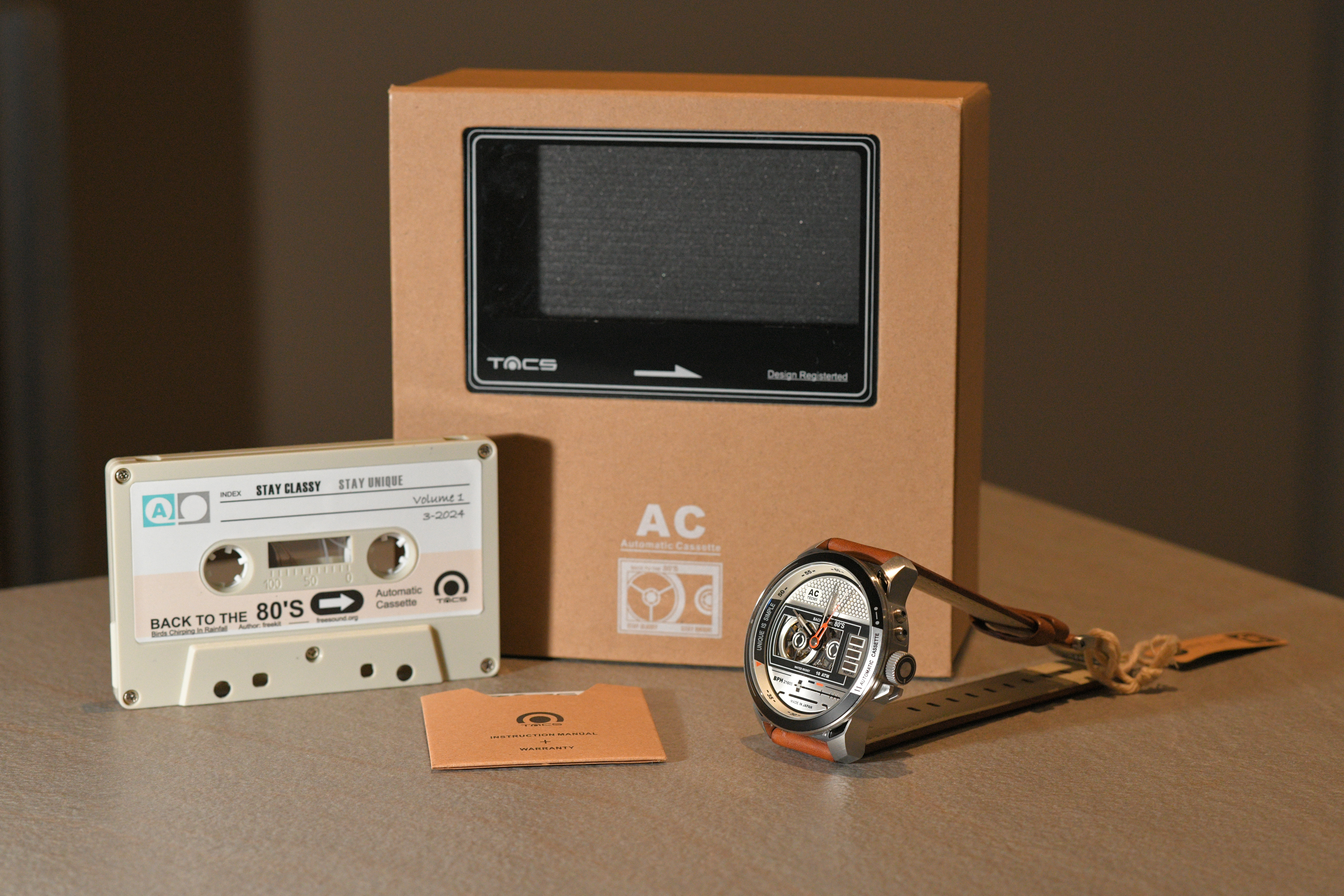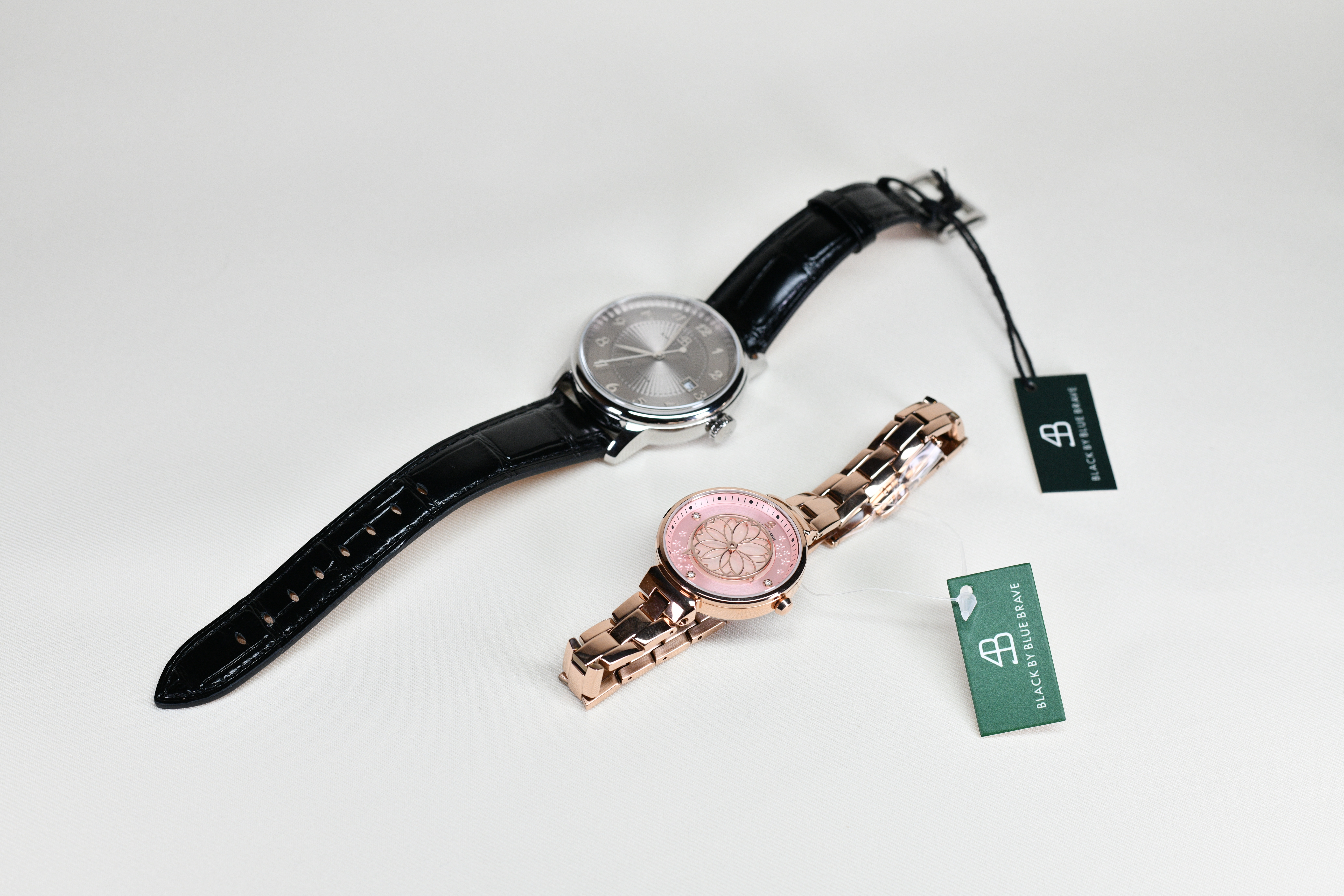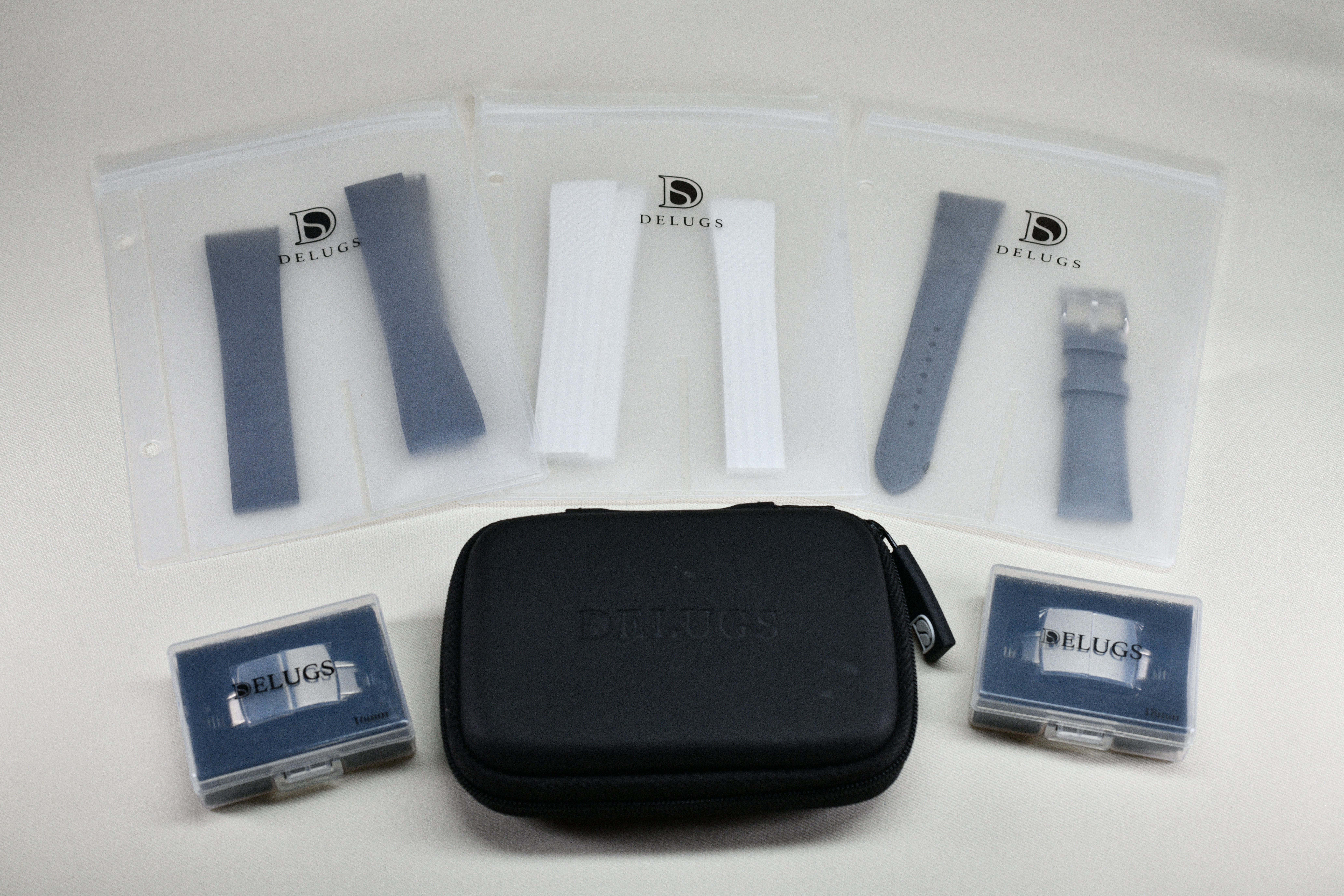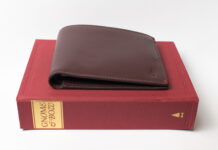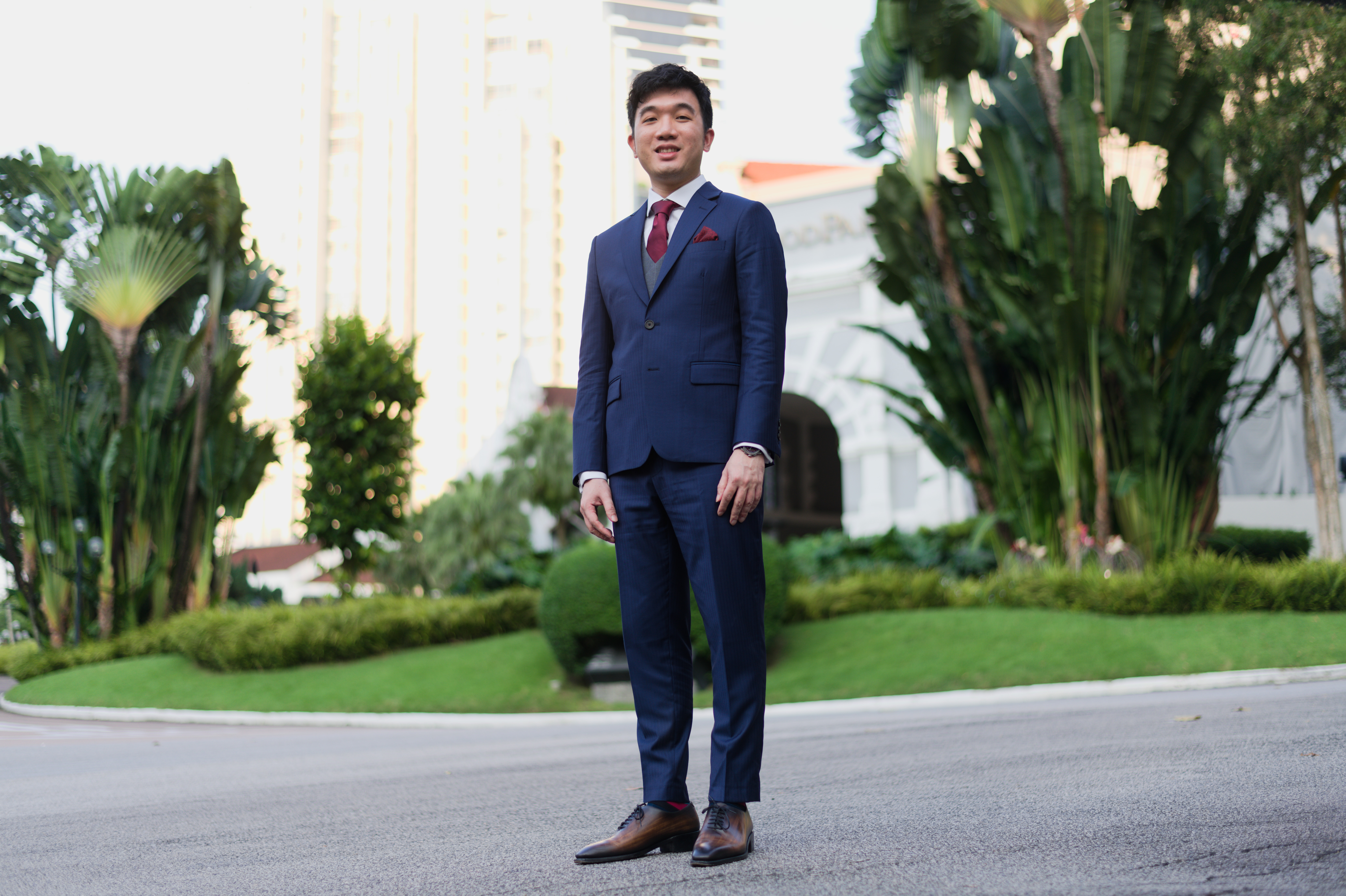Hello everyone, and welcome to another Singaporean review! On this shiok Saturday, I’m reviewing a couple of straps from local strap brand, Delugs.

Despite being a relatively new brand, the team behind Delugs has been leathercrafting for quite some time now, crafting items such as belts, wallets, bags, etc. They started by offering shell cordovan straps, and have since also branched into offering Buttero leather and waxed camouflage straps. Delugs kindly sent a couple of their straps for me to review – let’s take a look!
Delugs – the Brand
I sat down with Ken -founder of Delugs- to learn more about his brand.
1) Tell us more about Delugs, and what you hope to achieve.
K: Delugs is a watch strap brand, specifically focusing on leather watch straps. My vision for Delugs is to be able to provide high quality watch straps to the watch lover community, using leather that bespoke watch strap leathercrafters typically use but crafting the straps in large enough quantities so that the prices are much lower than bespoke prices. And also reduce the number of lug scratches by switching to straps with quick release pins. No more spring bar tool when changing watch straps!
2) How did Delugs start?
K: Before Delugs began, I was/am still a leathercrafter. In the leathercrafting world, a lot of time is spent perfecting the craft, learning about the different types of leather out there and crafting items that look beautiful and perform as expected. As my craft started improving, people started to take notice and I started to get orders in for wallets, belts, and watch straps.
After making a number of watch straps in various types of leather (chevre, buttero, shell cordovan, alligator), there seemed to be a common theme across the orders. These watch enthusiasts were looking for watch straps that were of equal quality as the watches that they had. At the core of it, they were looking for high quality leather that would not crack even after years of use, and with decent construction to match the leather quality.

What was not important to most of these customers was the bespoke nature of it. They did not require the strap to be made to an exact measurement to fit their wrists perfectly. They did not need to choose between 2.7mm or 3.38mm stitch spacing, or the thickness of the thread used. They just wanted a strap that worked. If they did not need bespoke, they did not have to pay for the bespoke prices.
This made me realize that there was an opportunity for me to bring my knowledge of leather and leathercrafting, source for a good manufacturer that can craft the straps exactly how I wanted it made, and create value by delivering what customers typically look for in a bespoke watch strap maker but at a more reasonable price point.
Needless to say, I am also a (budding) watch lover and the prospect of having my own straps made excite me quite a bit! Nothing better than being spoilt for choice over the straps to put on my watches.
3) In your opinion, what makes for a good quality strap? What should one look out for?
K: There are 2 key things to determine whether a strap is of good quality: the leather used and the construction.
For leather, you generally want the watch strap to be made of full grain or top grain leather, and not to use “genuine” leather or bonded leather. You can Google around to find out the differences between the various types of leather, but in general the top layer of leather has the greatest fiber strength and durability.
However, it is not easy to tell the type of leather just by looking at the strap. This is where branding comes in. Leather is produced by tannery, and each tannery produces many different articles of leather. Some articles might be full grain leather, some are top grain leather, some are veg tanned, some are chrome tanned. And some tanneries are more well-known than others, and within that tannery they might even have some articles of leather that are more well-known than other articles of leather. As an example, many people might have heard of the tannery Horween, which is based in Chicago, USA. They produce many different articles of leather (Chromexcel, Essex, Dublin, Shell Cordovan for example. Full list here), but naturally some are more popular than others due to the specific properties of that article of leather. As more people make and use items using these specific articles of leather, the properties of the leather is more well known, and whether the leather is “good” or not becomes more well-known.

As someone who might be new to leather, it is extremely difficult to sift through all the different tanneries and their articles. Even as a leathercrafter, it is almost impossible to have a comprehensive list of good tanneries and articles. But after doing a bit of research (Google might not have all the answers, Instagram has a more vibrant community of leathercrafters), it will become apparent that some articles have a better reputation than others and tend to be used more often. For example, Shell Cordovan from any of the tanneries that produce them, Buttero from Conceria Walpier tannery in Italy, Chevre from Alran tannery in France, Barenia from Haas tannery in France, Epsom from Du Puy tannery in France.
For construction, there are a few areas to look out for in a watch strap. Specifically – stitching, edges, symmetry and overall cleanliness.
For stitching, the common debate is between machine and handstitching. In general, hand-stitched items are more durable and stronger than machine-stitched items. However, unlike something like a bag strap (or horse saddle), watch straps are not expected to face much wear or stress and so the strength of the stitching becomes less crucial. What is crucial to look out for is the consistency and neatness of the stitching. Whether it is machine or hand-stitched, the stitching should be consistently spaced, have a consistent tension, and be a fixed distance away from the edge.

The next thing to look out for is how the edges are finished. The sides of leather is typically exposed and is the most vulnerable to wear. Hence, the edges have to be finished to protect the leather. There are a few ways this can be done. First is burnished edges, which basically means using friction to rub down the fibres of the leather and form a sealed edge of leather. Not all articles of leather can be burnished, it depends on whether the leather is veg-tanned (can be burnished) or chrome-tanned (cannot be burnished). When the leather is burnished, the edge is no longer exposed to the elements. Second is painted edges, where a layer of paint is applied over the edges to seal the exposed portion of leather. The paint gets worn down over time instead of the leather. Lastly is a bound edge, where the leather itself is wrapped around itself to cover the exposed edges. The top layer of the leather protects the edge. All 3 ways have their own pros and cons, but I generally prefer painted and burnished edges. Burnished edges look great and can be reburnished if the fibers become loose again, but ultimately you are still wearing down the leather and not all leather can be burnished nicely. Painted edges provide an additional layer to take the wear and tear, and can be easily reapplied, but you might not get a consistent look and feel. Bounded edges retain the look of the leather on the edges, but the leather faces the wear and tear and it cannot be repaired easily after the leather at the edges wear down.
The last thing to look out for is the overall symmetry of the strap and the cleanliness in the construction. The shape and symmetry should not be taken for granted, as bespoke strap makers typically hand-cut their straps which can lead to some irregularity in the shape. The cleanliness of the construction refers to whether there are random marks on the leather, whether the edge paint overflows onto the leather etc. A good strap maker is able to produce a strap that is symmetrical and very clean and consistent all across.
4) Can you elaborate more on the leather used in your straps, as well as the craftsmanship involved?
K: Currently, I have 3 main types of leather that I use. Shell Cordovan from Shinki Hikaku tannery in Japan, Buttero from Conceria Walpier in Italy and Waxed Camouflage from Conceria le Bretagna in Italy.
Shell Cordovan comes from the butt of the horse, and widely considered as the most durable leather around due to the fiber density of the horse butt. While most people are familiar with Shell Cordovan from Horween, not many know about Shinki Hikaku. Compared to Horween, Shinki shell has much better water and scratch resistance, the leather surface is generally of better quality (nice sheen, less bites, marks and scars), and is cheaper. I’m of the opinion that Shinki shell is technically superior to Horween, but due to better marketing (more marks/less uniform surface = rustic) of the American company, Horween is the more popular choice.

Buttero is a type of cow hide that is veg tanned. It is slightly stiff to begin with, with a very clean surface (and a wonderful leather smell). As its used and worn in, it picks up the scratches and marks from daily use, but these marks gets faded/buffed away as the strap is used even more. Eventually it forms a nice patina and aged look that so many leather enthusiast love. The edges can also be easily burnished to a smooth and glossy surface.
Lastly, Waxed Camouflage is also a type of veg tanned cow hide. The most unique thing about this leather is the surface pattern. It is coloured in a camouflage manner, and the top most layer is actually a layer of wax that gives it a whiteish colour. As the strap is used and worn in, the layer of wax rubs off and gives a beautiful sheen to the camouflage pattern underneath. Similar to Buttero, it patinas very nicely and also takes nicely to burnishing.

Craftsmanship wise, my straps are a mixed bag as I am still testing the market on which are preferred and whether the watch lover community cares about some of the construction details.
Stitching: The shell cordovan straps are machine stitched, while the Buttero and Waxed Camouflage straps are hand stitched.
Edges: The shell cordovan straps have painted edges, while the other two have burnished edges.
All strap patterns are cut with a die press machine to ensure consistency. In addition, the straps have decorative crease lines just next to the stitching, and all straps have a quick release pin to allow the user to easily swap out between straps. A strap a day keeps new watches away?
5) Are you planning to introduce more types of straps in the future? Anything in the pipeline?
K: Definitely! So much in the works.
In terms of leather, I’m bringing in more chrome-tanned and patterned leather such as Epsom and Chevre, as well as the famed Barenia leather that Apple uses on their watch strap. Will also be bringing in other types of Horween leather such as Chromexcel.
In terms of strap styles, apart from the Signature watch strap (fully lined, stitched and padded), I’m also introducing the more simple Side Stitch watch strap that is better suited for casual wear in the coming weeks, and slightly further down the road, looking at single pass/NATO/Zulu straps if enough people ask me for it.

Lastly, allowing made-to-order straps in a much greater range of leather options and style, available to purchase directly through the website. Basically every type of leather that I already have as in-stock straps will be available as a MTO, but also including exotic leather like ostrich, stingray, crocs and lizards.
I’ve also gotten prototypes for watch cases and watch rolls but these will likely be much further down the road.
There’s a lot of leather articles, colours and styles that I love to produce and sell as in-stock straps, but in trying to run a business I also try to keep my inventory manageable. Rest assured that I will slowly expand and grow my offerings over time with the support of the watch lover community!
Delugs Buttero Strap – $75 SGD
Delugs offers Buttero leather straps – uncommon locally – at a very affordable price.

To my knowledge, Delugs is the only strapmaker in Singapore to offer Buttero leather straps. Buttero leather is a vegetable tanned, full grain leather from Conceria Walpier, an esteemed tannery in Italy. More commonly used in leather objects such as belts and wallets, Buttero leather straps are prized for their wonderful patina, as well as rich colour.

On cheaper leathers (such as genuine leather or corrected leather), the appearance of the leather will look uniform throughout. On quality leather, one can should be able to see the pores and grain of the leather – this indicate that the leather was taken from the uppermost portion of the animal’s hide. I’m glad to say that Delugs’ Buttero straps fall into the latter category!

Here, the Buttero strap is padded, lined, and hand-stitched. This is the culmination of a leather artisan’s hours of work – each is a work of art. In addition, hand-stitched straps are more durable than machine-stitched straps, so that’s an additional plus!

In addition, the strap loops are hand-stitched for added durability – these shouldn’t break anytime soon! Furthermore, Delugs uses Buttero leather as the inner lining material as well. On the wrist, the strap not only feels comfortable, but it also feels premium. Often, strapmakers would use a lower-quality leather as the inner lining to save cost – I’m glad that’s not the case here! Elsewhere, the strap also comes with quick-release bars so that one can swap out their leather straps in a matter of seconds. I’m a big fan of quick-release straps and the convenience they bring – no spring bar tool needed for this one!

Overall, I really like the Buttero strap from Delugs. It looks premium, feels premium, and the craftsmanship on the straps themselves is great. At just S$79 (after promo code below), I think it’s great value – it’s cheaper than the average price of a off the rack strap that one finds in a watch store. If you’re looking for some vegetable tanned, full-grain handcrafted leather goodness, I think Delugs’ Buttero straps will be a great option!
Delugs Waxed Camouflage Strap – S$75
Next, Delugs sent over their Waxed Camouflage strap for me to review.

For their waxed camouflage strap, Delugs sources their leather from the Conceria la Bretagna tannery in Italy. Like Conceria Walpier (the tannery Delugs gets their Buttero leather from), the Conceria la Bretagna is another esteemed tannery that has been producing leather for over 40 years! Similar to the Buttero leather straps, the waxed camouflage straps are vegetable tanned and full grain, which results in lovely patina over time. In addition, the wax layer sitting at the top of the leather will wear down to reveal the beautiful camouflage pattern beneath – so the strap literally changes its appearance after time on the wrist!

Like on the Buttero straps, the individual grains of the leather can be clearly seen on the waxed camouflage strap. As aforementioned, this indicates that the leather was taken from the uppermost portion of the animal’s hide – this is quality stuff.

Similarly, the waxed camouflage strap is also hand-stitched, the result of hours of dedication by a leather artisan. Look at the stitching – exquisite.

As mentioned earlier, all strap loops on Delugs’ straps are hand-stitched for greater durability. In addition, all of Delugs’ straps also possesses quick-release spring bars, which allows one to change their watches in a matter of seconds without worrying about scratching the lugs of their watches. Here, Delugs opted to use back the same waxed leather from Conceria la Bretagna as the inner lining. On the wrist, it feels great and comfortable – definitely a league above those cardboard-ish linings one finds on lower priced straps!

All in all, I really liked the waxed camouflage strap from Delugs. The strap is well-crafted, and the leather quality is pretty great for the price as well. The camouflage pattern, as well as the strap’s ability to look different after prolonged usage, gives the strap an added character. Personally, I think the waxed camouflage strap is the perfect accompaniment to more rugged watches such as the BOLDR Globetrotter. At just S$79 (after promo code below), it won’t break the bank either!
Delugs Shell Cordovan Strap – S$105
Delugs’ Shell Cordovan strap was their maiden offering, and till this date it still remains as their best seller!

Delugs was kind enough to send two colourways of their Shell Cordovan straps over. For their straps, Delugs gets the Shell Cordovan leather from the Shinki Hikaku tannery in Japan. For those unfamiliar with Shell Cordovan, Shell Cordovan is a vegetable tanned leather fashioned out of the rump of horses. Due to its unique glossy look, high durability, and superior water resistance, Shell Cordovan is one of the most desired leathers in the world. Fun fact: Nomos Glashutte (one of my favourite watch brands) uses Shell Cordovan straps on all of their watches – I think that’s a great testament to the quality of Shell Cordovan!
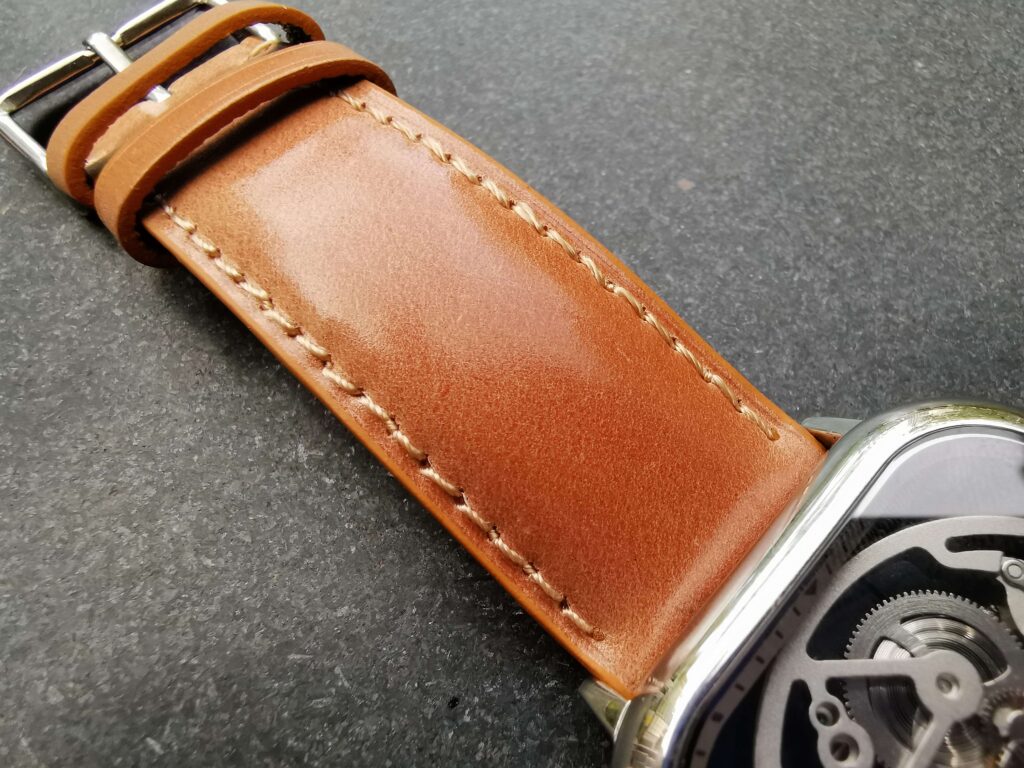
Look at it close up, and one can still clearly see the grains of the Shinki Shell Cordovan leather. The high gloss finish of the strap is lovely to behold as well – it adds a touch of dressiness to the watch. Yet, due to their high durability and water resistance, it’s a strap that can stand the trials and tribulations of your daily adventures too. In my opinion, a Shell Cordovan strap is the perfect combination of elegance and ruggedness.

In addition, I must commend Delugs on being able to source a variety of colourways for their Shell Cordovan straps. Locally, most Shell Cordovan offerings are limited to Black and Brown – Delugs offer their Shell Cordovan straps in a whopping 5 different colours (Black, Navy, Brown, Natural, Green)!

Like the previous straps, the strap loops of Delugs’ Shell Cordovan strap comes stitched, and there’s quick release bars for convenient strap switching as well! For the lining, Delugs uses premium French Goat leather that matches the colour of the Shell Cordovan strap. I must say, the goat lining is immensely comfortable, and feels very nice to the touch. Colour me impressed!

Overall, I think Delugs’ Shell Cordovan straps are of terrific value. Only four tanneries in the world produces Shell Cordovan straps – due to this oligopoly, prices of Shell Cordovan items are often sky-high. For Delugs to offer a fully lined, Shell Cordovan strap for just S$110 is pretty incredible. In fact, to my knowledge that’s the cheapest fully lined Shell Cordovan strap you can find locally! While some corners had to be cut to get the price down – unlike the previous straps, Delugs’ Shell Cordovan straps are machine-stitched, not hand-stitched – all in all I sincerely believe that Delugs’ Shell Cordovan straps are great bang-for-buck.
Conclusion – so Delugs Straps “shiok” or not?
Definitely. All their straps are awesome value propositions. The Buttero strap is a great choice on dressier watches, whilst the waxed camouflage strap pairs perfectly with more rugged watches. More importantly, both won’t break the bank! Furthermore, Delugs offers perhaps the cheapest Shell Cordovan straps locally, in a wide variety of colours. Given how they knocked all three of their current strap offerings out of the park, I can’t wait to see what Delugs offer next!
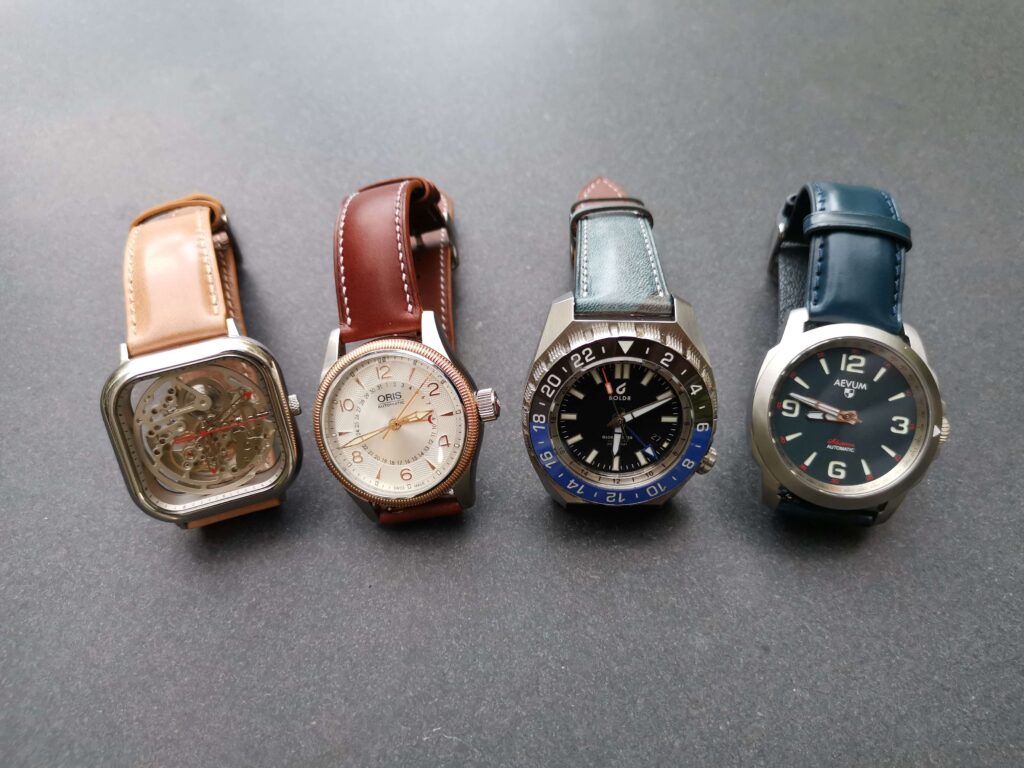
For those interested, the promo code “WAHSOSHIOK” will grant you 15% off all products from Delugs! After the discount, the Buttero and waxed camouflage leather straps would cost just S$75, while their Shell Cordovan strap can be had for just S$105. In my opinion, those are incredible prices – it’s cheaper than most of the Hirsch straps found in watch stores!
Update: The promo code expired in 2020, and is no longer active.
View Delugs’ full range of offerings here.
View Part 2 of my review of Delugs here.
P.S Do check out the new “Discounts!” page for exclusive discounts for Wahsoshiok readers! More brands will be added very soon – stay tuned!
P.S.S If you haven’t already, do follow my social media channels on Facebook here, and on Instagram here!

